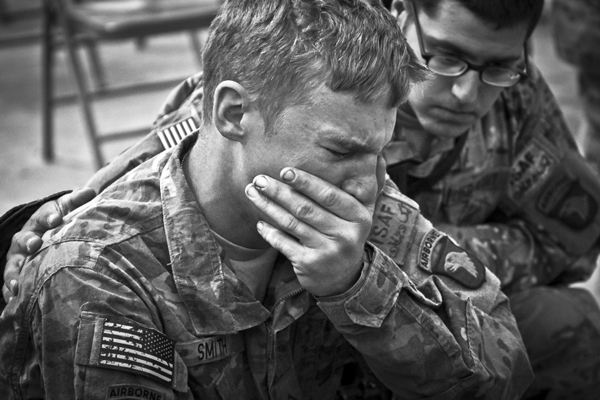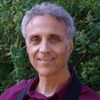
The 60 Minutes piece last Sunday on the life and death of Clay Hunt, a Marine who earned a Purple Heart serving in the Marines in Iraq and Afghanistan, demonstrated how much we have yet to learn about the epidemic of suicide in our returning troops and veterans.
What shocked so many is that Clay was "the poster boy" for how someone "should" return from war. He "did all the right things." After coming home, he became proactive, helping create Team Rubicon and participated actively in Ride 2 Recovery. In 2010 he stormed the hill with IAVA, advocating and using his own experience to help others as part of their Ad Council Mental Health PSA program. He sought help at the VA, took his meds, tried to revive his sense of purpose through meaningful public service, had good friendships, and exercised vigorously. How then could Clay Hunt take his life?
First, Clay's death reminds us that it is difficult if not impossible to prevent someone intent on killing himself from doing so. But, if we do not examine the lessons yet unlearned, we run the risk that his death, and the deaths of hundreds of thousands of veterans by their own hands, will have been in vain. And that is unacceptable.

What are we missing?
Let's start with the word "haunted" from the 60 Minutes piece. I have heard the word hundreds of times talking with returning veterans. Unprocessed traumatic residues, or ghosts, literally haunt and consume the present. The future does not exist. Nowhere in the piece do we see Clay finding a way to genuinely process what he had been through and transform the ghosts of his military service, among them the losses, the helplessness, and the questions about mission that we hear about. Clearly Clay, like thousands of veterans, remained plagued and tortured, despite his stellar external adaptation to civilian life. Even his tentative forays at opening up to his parents belied this haunting.
Second, We each have an inner world. Not all anguish can be successfully addressed by "doing something." This includes altruistic public service, and using one's experience to help others. Undeniably noble and often useful to others, sometimes we end up ignoring and bypassing our own inner demons and postpone addressing them. Sometimes tragically. I'm not sure that dedicated and well-meaning people and organizations in veteran services today fully appreciate this. We tend to underestimate the inner world, at our peril.
Third, it's tough to bear painful emotion. We don't "get" inner anguish, and we can be allergic to emotional pain. When we sense it we tend to jump in and try to "fix" it. In a recent study the most frequent reason soldiers gave for attempting suicide was ... intense emotional pain. No duh! Did we need a study to tell us that? This is one of those simple truths we all "know" but doggedly refuse to face and let sink in. It is our resistance to letting it inform our experience and responses that we need to address.
Forth, there is the "poster boy" image of Clay. This image was held by many working in the veteran services field, some of them veterans, some of them his buddies. We must challenge this image and examine the reasons for it. Did it buoy our spirits? Make us feel more hopeful? No more "poster boys" (or girls); okay?
Fifth, Clay "did all the right things." According to whom? The fact is that traditional psychiatric treatment, including medications, is not enough. Selfless public service, trying to reconstruct a sense of meaning and purpose, is not enough. Good friends are not enough. Vigorous exercise is not enough. As critical as a good job is, jobs are not enough. All of these are elements in the healing process, but they are not enough.
We must learn, and relearn, that there are no silver bullets -- and no silver "laundry lists." Not EMDR, not Prolonged Exposure Therapy, not Cognitive Behavioral Therapy, all evidence-based therapies that can sometimes decrease disturbing symptoms. And not newer integrative modalities such as meditation, yoga and qigong, which are developing an evidence base of their own. No quick fixes can extinguish inner emotional pain.
None of these address the deeper layers of the human psyche and the human heart. There is a path to healing and prevention hidden in plain sight. Although not a panacea, it mobilizes the natural healing powers of the communities we belong to. I call it turning ghosts into ancestors. Its research data was published in a peer-reviewed journal of the American Psychological Association and it emerged from the DCoE's review of thousands of reintegration programs as the only one that both met their major criteria and had significantly positive outcome data. DoD and VA have referred hundreds of service members and veterans, their families, and their caregivers, to this program, the Coming Home Project, with results that have earned it a stellar reputation. I'm not saying this approach would have prevented Clay from taking his life. But it is worth asking why a proven, trusted community-building post-traumatic growth program is dying on the vine for lack of funding.
I think as a country we are caught up in our collective aversion to profound suffering in general, and the wrenching anguish that is war trauma in particular. We are so blinded that government agencies and corporations, and even well-funded non-profits, are throwing hundreds of millions of dollars at "evidence-based" programs for PTSD that do not address the appropriate register of experience and so unfortunately will continue to come up short when it comes to genuinely healing the inner anguish of our veterans and more effectively preventing them from killing themselves.
